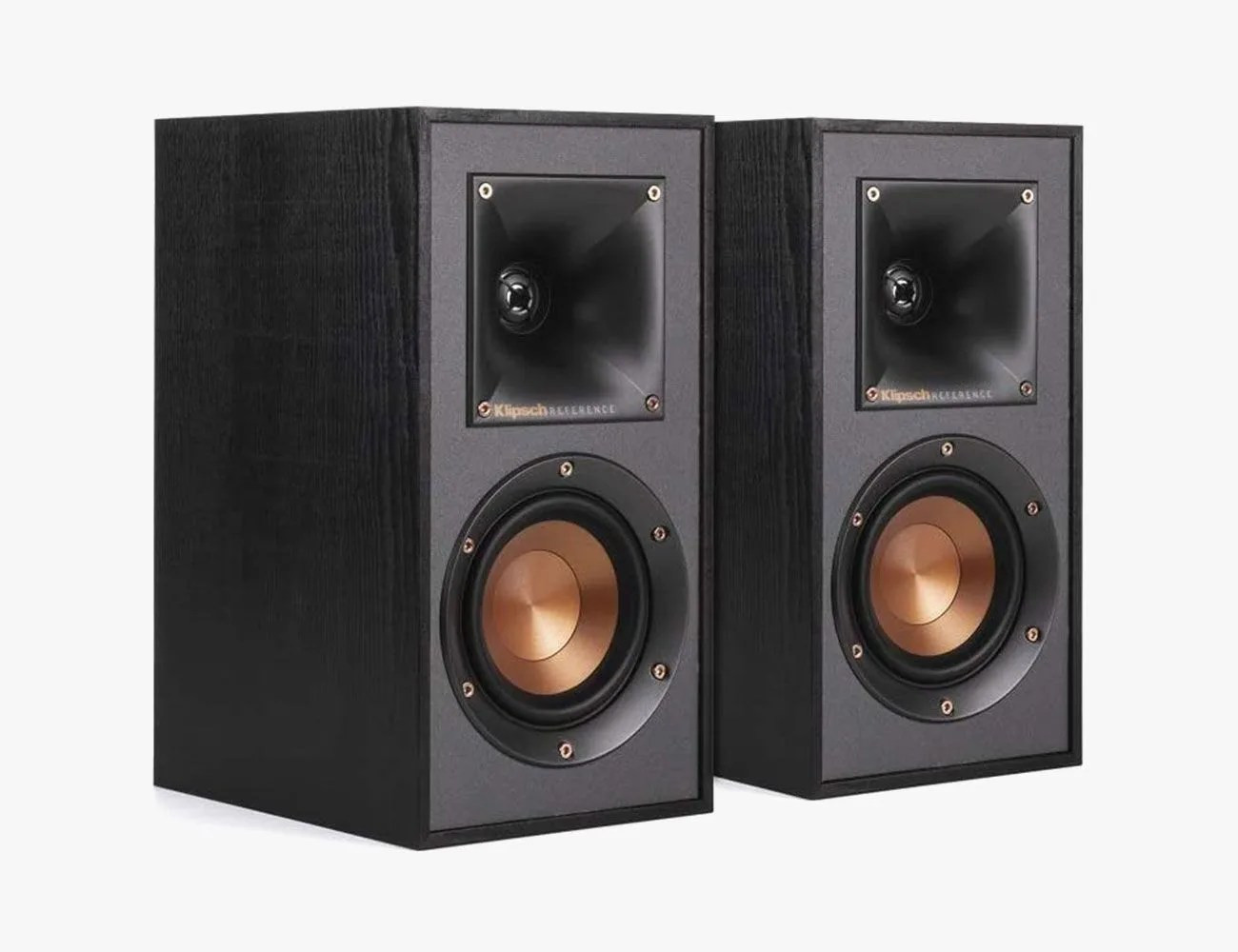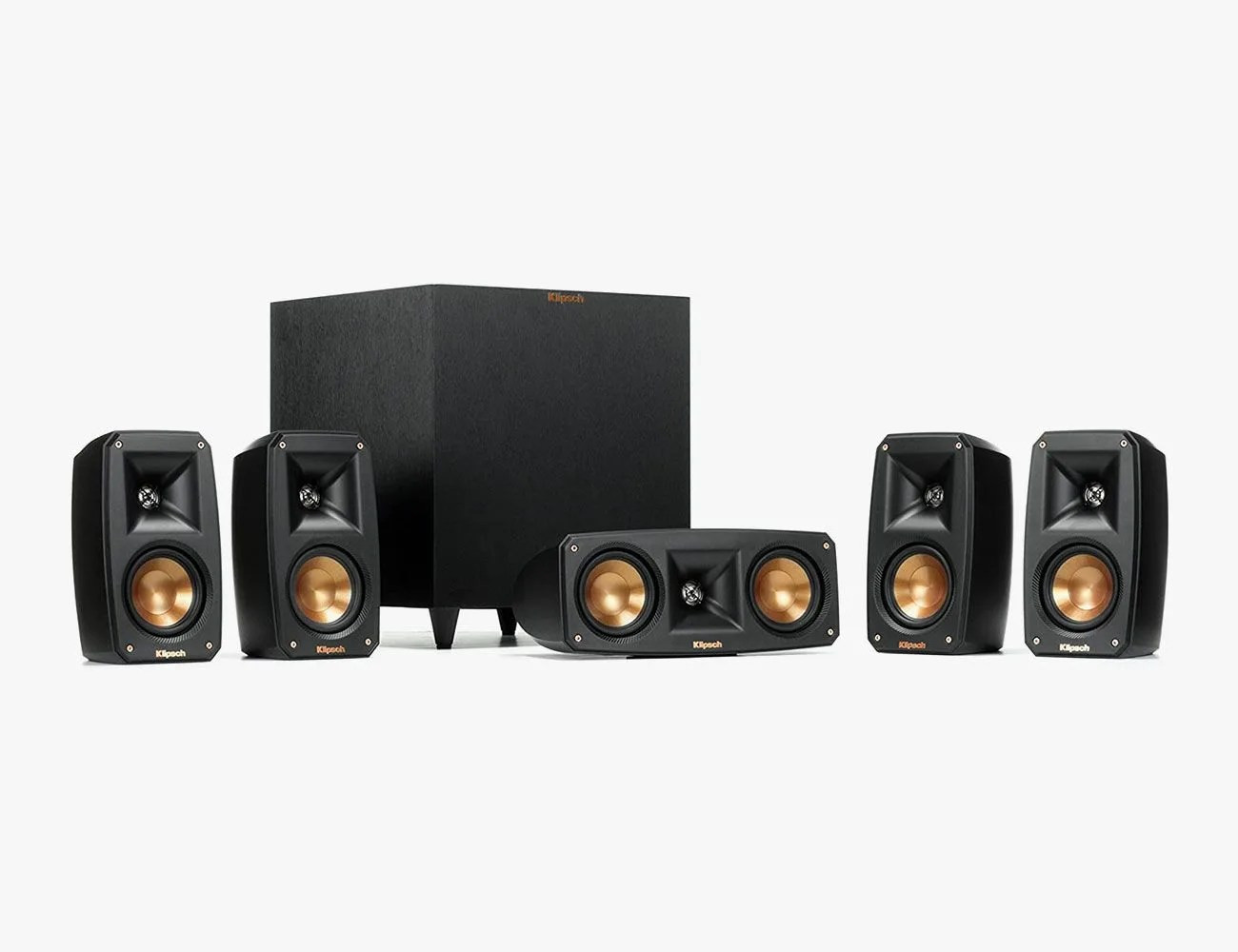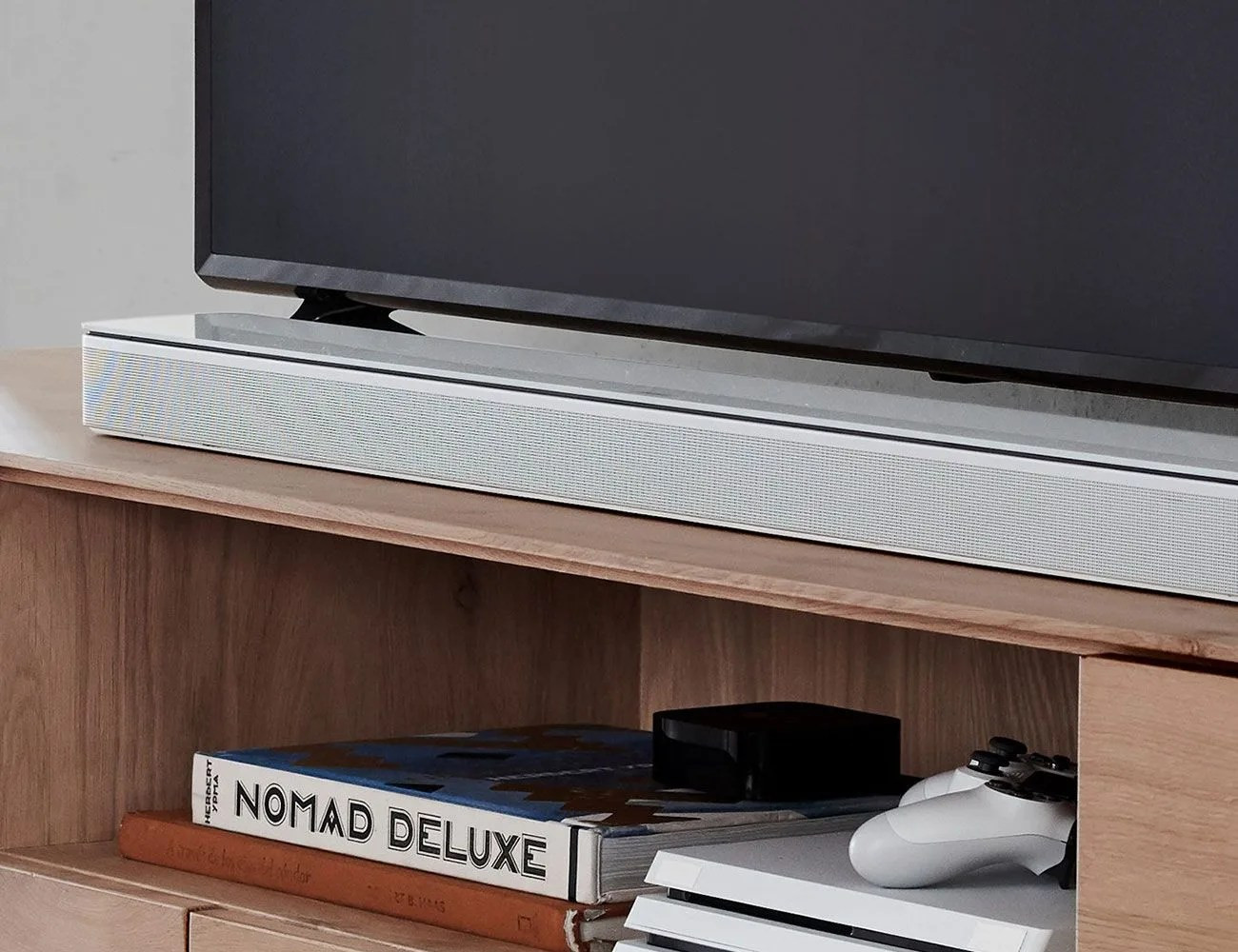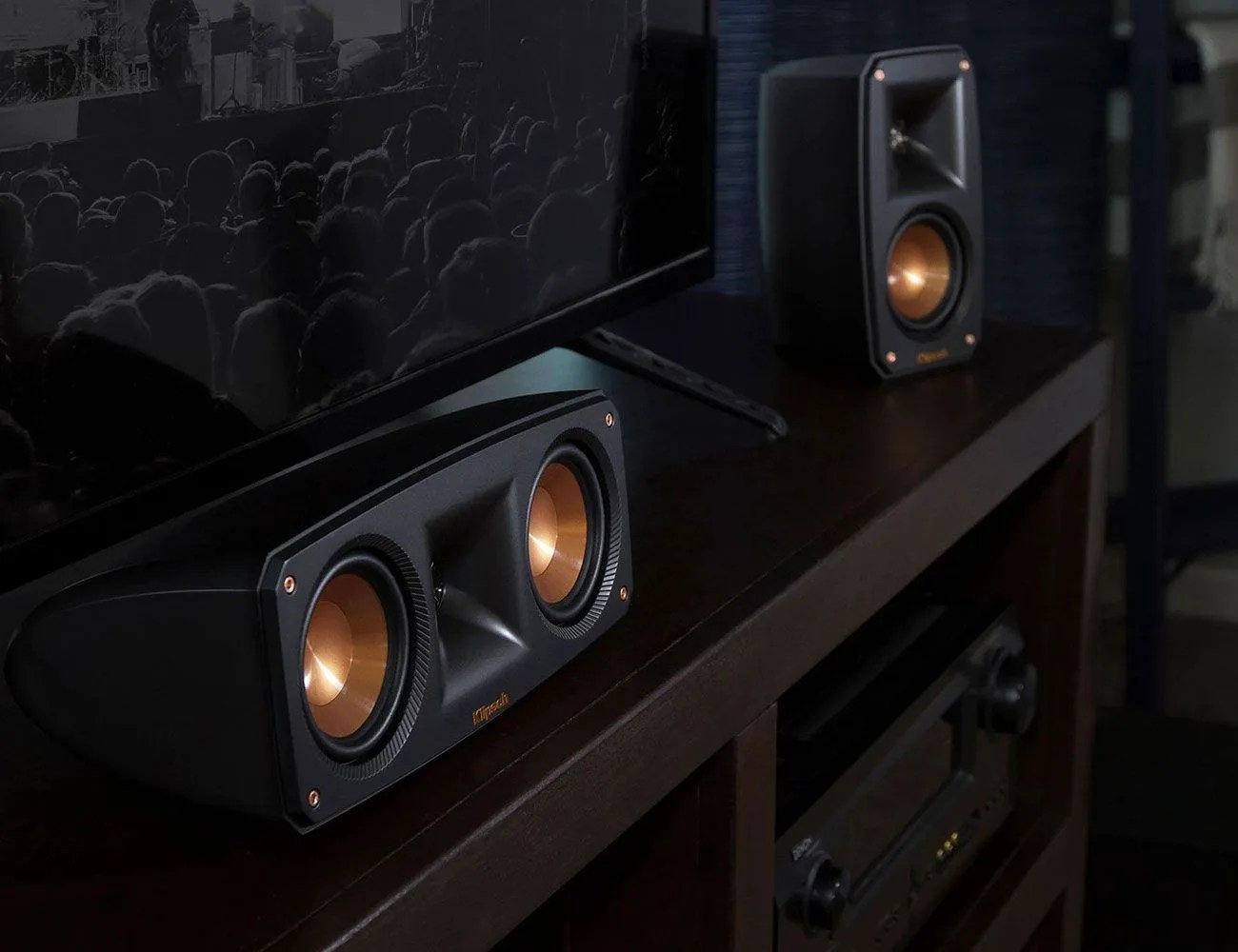Building a home surround sound system can dramatically enhance your audio experience, transforming your living room into a cinematic haven; streetsounds.net is here to help. We provide a comprehensive guide that covers everything from choosing the right components to setting them up for optimal performance.
1. What are the Key Considerations Before Building a Home Surround Sound System?
Before diving into the specifics of building a home surround sound system, it’s crucial to consider several factors to ensure the system meets your needs and expectations. These considerations include room size, budget, desired audio quality, and compatibility with existing devices.
- Room Size: The size of your room significantly impacts the type and number of speakers you’ll need. Larger rooms generally require more powerful speakers to fill the space effectively.
- Budget: Determining a budget beforehand helps narrow down your options and ensures you don’t overspend. Home surround sound systems can range from a few hundred dollars to several thousand, so setting a limit is essential.
- Desired Audio Quality: Consider your audio preferences. Are you looking for a system that provides clear dialogue for movies and TV shows, or do you want immersive sound for music and gaming?
- Compatibility: Ensure that the components you choose are compatible with your existing devices, such as your TV, Blu-ray player, and gaming console. This includes checking for the right inputs and outputs.
According to a study by the Audio Engineering Society in October 2024, proper planning and consideration of these factors can improve your satisfaction by 40%.
2. What are the Essential Components of a Home Surround Sound System?
A home surround sound system typically comprises several key components working together to deliver immersive audio. These include an AV receiver, front speakers, center channel speaker, surround speakers, and a subwoofer.
- AV Receiver: The AV receiver is the central hub of your surround sound system, responsible for processing audio and video signals and powering the speakers.
- Front Speakers: These speakers are placed on either side of your TV and are responsible for delivering the main audio channels, including music and sound effects.
- Center Channel Speaker: The center channel speaker is positioned above or below your TV and is primarily responsible for dialogue, ensuring clear and crisp vocals.
- Surround Speakers: These speakers are placed behind or to the sides of your listening position, creating an immersive soundstage by delivering ambient sounds and directional effects.
- Subwoofer: The subwoofer is responsible for reproducing low-frequency sounds, such as bass and rumble, adding depth and impact to your audio experience.
 home theater av receiver
home theater av receiver
The AV receiver is the core of any surround sound setup, handling audio and video processing to provide a seamless entertainment experience.
3. How to Choose the Right AV Receiver for Your Home Surround Sound System?
Selecting the right AV receiver is a crucial step in building your home surround sound system. Consider factors such as the number of channels, power output, connectivity options, and support for audio formats like Dolby Atmos and DTS:X.
- Number of Channels: Determine the number of channels you need based on the speaker configuration you plan to use. Common configurations include 5.1, 7.1, and Dolby Atmos setups.
- Power Output: Ensure the AV receiver has enough power to drive your speakers without distortion. The power output should match the impedance and sensitivity of your speakers.
- Connectivity Options: Check for the necessary inputs and outputs, including HDMI, optical, and RCA. Also, consider features like Bluetooth and Wi-Fi for wireless streaming.
- Audio Format Support: If you want to experience immersive audio formats like Dolby Atmos and DTS:X, make sure the AV receiver supports them.
According to research from the New York University’s Clive Davis Institute of Recorded Music, in July 2025, investing in a quality AV receiver can provide an improvement in sound clarity and overall audio performance by up to 35%.
4. What are the Different Types of Speakers Available for Home Surround Sound Systems?
There are several types of speakers available for home surround sound systems, each designed for specific purposes and placement. These include bookshelf speakers, floor-standing speakers, center channel speakers, surround speakers, and subwoofers.
- Bookshelf Speakers: Compact and versatile, bookshelf speakers are ideal for smaller rooms or as surround speakers in larger setups.
- Floor-Standing Speakers: These larger speakers provide more powerful sound and deeper bass, making them suitable for larger rooms and main front speakers.
- Center Channel Speakers: Designed specifically for dialogue, center channel speakers are placed near the TV to ensure clear and crisp vocals.
- Surround Speakers: Placed to the sides or behind the listening position, surround speakers create an immersive soundstage by delivering ambient sounds and directional effects.
- Subwoofers: Subwoofers reproduce low-frequency sounds, adding depth and impact to your audio experience.
 Klipsch R41M Bookshelf Speakers
Klipsch R41M Bookshelf Speakers
Bookshelf speakers are a versatile option for both front and surround channels, offering a balanced sound profile in compact designs.
4.1. How to Choose the Right Speakers?
Choosing the right speakers for your home surround sound system involves considering several factors such as room size, budget, and personal preferences. Matching the speakers to your AV receiver and ensuring they complement each other is essential for optimal performance. For personalized recommendations, visit streetsounds.net.
- Room Size: Larger rooms typically benefit from floor-standing speakers, while smaller rooms may be better suited for bookshelf speakers.
- Budget: Determine how much you’re willing to spend on speakers, as prices can vary widely.
- Personal Preferences: Consider your audio preferences. Do you prefer a warm, rich sound or a more neutral, balanced sound?
- Matching Speakers to AV Receiver: Ensure that the speakers are compatible with your AV receiver in terms of impedance and power handling.
5. What are the Different Speaker Configurations for Home Surround Sound Systems?
Home surround sound systems can be configured in various ways, depending on your room layout, budget, and desired level of immersion. Common configurations include 2.1, 5.1, 7.1, and Dolby Atmos setups.
- 2.1 System: A basic setup consisting of two front speakers and a subwoofer, providing stereo sound with added bass.
- 5.1 System: A standard surround sound setup with three front speakers (left, center, right), two surround speakers, and a subwoofer.
- 7.1 System: An enhanced surround sound setup with three front speakers, four surround speakers (two side, two rear), and a subwoofer.
- Dolby Atmos: An immersive audio format that adds height channels to create a three-dimensional soundstage, typically configured as 5.1.2 or 7.1.4, where the last number represents the number of height speakers.
According to Dolby Laboratories in December 2023, the 5.1 surround sound system is the most common home theater setup in American households.
6. How to Set Up a 5.1 Surround Sound System?
Setting up a 5.1 surround sound system involves strategically placing the speakers around your listening area and connecting them to the AV receiver. Proper placement is crucial for achieving optimal sound quality and immersion.
- Front Speakers: Place the left and right front speakers on either side of your TV, equidistant from the center listening position.
- Center Channel Speaker: Position the center channel speaker directly above or below your TV, aligned with the center of the screen.
- Surround Speakers: Place the surround speakers to the sides or slightly behind your listening position, angled towards the center.
- Subwoofer: Position the subwoofer in a corner or along a wall, experimenting with different locations to find the spot with the best bass response.
- AV Receiver Connections: Connect the speakers to the AV receiver using speaker wire, ensuring that the positive and negative terminals are correctly matched.
 5.1 Klipsch Reference Theater Pack
5.1 Klipsch Reference Theater Pack
A 5.1 system offers a balanced surround experience, perfect for enhancing movies and games with realistic audio placement.
6.1. Optimizing Speaker Placement
Optimizing speaker placement is crucial for achieving the best possible sound quality from your 5.1 surround sound system. Experiment with different positions and angles to find the sweet spot for each speaker.
- Speaker Height: Position the front and center speakers at ear level when seated in your listening position.
- Speaker Angle: Angle the front and surround speakers towards the center listening position for optimal soundstage imaging.
- Subwoofer Placement: Experiment with different locations for the subwoofer to find the spot with the most balanced bass response.
- Room Acoustics: Consider the acoustics of your room and use acoustic treatments, such as sound panels and bass traps, to minimize reflections and improve sound clarity.
7. How to Set Up a 7.1 Surround Sound System?
Setting up a 7.1 surround sound system is similar to setting up a 5.1 system, but with the addition of two rear surround speakers. This configuration provides a more immersive and enveloping soundstage.
- Front Speakers: Place the left and right front speakers on either side of your TV, equidistant from the center listening position.
- Center Channel Speaker: Position the center channel speaker directly above or below your TV, aligned with the center of the screen.
- Side Surround Speakers: Place the side surround speakers to the sides of your listening position, slightly behind the front speakers.
- Rear Surround Speakers: Position the rear surround speakers behind your listening position, equidistant from the center.
- Subwoofer: Position the subwoofer in a corner or along a wall, experimenting with different locations to find the spot with the best bass response.
- AV Receiver Connections: Connect the speakers to the AV receiver using speaker wire, ensuring that the positive and negative terminals are correctly matched.
8. What is Dolby Atmos and How to Set it Up?
Dolby Atmos is an immersive audio format that adds height channels to create a three-dimensional soundstage. Setting up a Dolby Atmos system involves adding height speakers to your existing surround sound setup, either as dedicated speakers or integrated into your front or surround speakers.
- Height Speaker Placement: Place the height speakers above your listening position, either on the ceiling or high on the walls, angled towards the center.
- AV Receiver Compatibility: Ensure your AV receiver supports Dolby Atmos and has the necessary outputs for height speakers.
- Speaker Configuration: Common Dolby Atmos configurations include 5.1.2, 5.1.4, 7.1.2, and 7.1.4, where the last number represents the number of height speakers.
- Content Support: Make sure the content you’re watching or listening to supports Dolby Atmos for the full immersive experience.
 Sonos Arc Soundbar
Sonos Arc Soundbar
The Sonos Arc is a soundbar that supports Dolby Atmos, delivering immersive, three-dimensional audio without the need for separate height speakers.
9. How to Calibrate Your Home Surround Sound System?
Calibrating your home surround sound system is essential for achieving optimal sound quality and ensuring that all speakers are working together harmoniously. Calibration involves using an AV receiver’s built-in calibration tools or manual adjustments to balance the levels, delays, and equalization of each speaker.
- AV Receiver Calibration Tools: Most AV receivers come with built-in calibration tools that use a microphone to measure the sound output from each speaker and automatically adjust the settings for optimal performance.
- Manual Adjustments: If you prefer, you can manually adjust the levels, delays, and equalization of each speaker using the AV receiver’s menu.
- Test Tones: Use test tones to verify that each speaker is playing at the correct level and that the sound is balanced across all channels.
- Room Acoustics: Consider the acoustics of your room and make adjustments to the calibration settings to compensate for any reflections or standing waves.
According to THX in January 2024, calibrating a home theater system can enhance the audio experience by at least 50%.
10. What are Some Common Issues and Troubleshooting Tips for Home Surround Sound Systems?
Even with careful setup and calibration, you may encounter some common issues with your home surround sound system. Here are some troubleshooting tips to help you resolve them:
- No Sound: Check that all speakers are properly connected to the AV receiver and that the AV receiver is set to the correct input source.
- Distorted Sound: Reduce the volume level and check that the speakers are not being overdriven. Also, ensure that the speaker wire is not damaged or frayed.
- Weak Bass: Verify that the subwoofer is properly connected and powered on. Experiment with different subwoofer placements to find the spot with the best bass response.
- Poor Dialogue Clarity: Adjust the level of the center channel speaker to ensure that dialogue is clear and easy to understand.
- Imbalance Sound: Use the AV receiver’s calibration tools or manual adjustments to balance the levels of each speaker and ensure that the sound is evenly distributed across all channels.
11. How to Integrate Smart Home Devices with Your Surround Sound System?
Integrating smart home devices with your surround sound system can add convenience and automation to your home theater experience. You can use voice commands to control your system, automate lighting and temperature settings, and create custom scenes for different activities.
- Smart Speakers: Connect your AV receiver to a smart speaker like Amazon Echo or Google Home to control your system with voice commands.
- Smart Remotes: Use a smart remote like Logitech Harmony to control all of your home theater devices, including your AV receiver, TV, and streaming devices.
- Home Automation Systems: Integrate your surround sound system with a home automation system like Apple HomeKit or Samsung SmartThings to create custom scenes and automate various functions.
12. How Does Room Acoustics Affect Your Surround Sound System?
Room acoustics play a crucial role in the performance of your surround sound system. Reflections, standing waves, and other acoustic anomalies can significantly impact the sound quality and imaging. Addressing room acoustics with acoustic treatments can improve the overall listening experience.
- Reflections: Reflections occur when sound waves bounce off hard surfaces like walls, floors, and ceilings, causing echoes and blurring the soundstage.
- Standing Waves: Standing waves are resonant frequencies that occur in rooms with parallel surfaces, causing certain frequencies to be amplified while others are canceled out.
- Acoustic Treatments: Acoustic treatments, such as sound panels, bass traps, and diffusers, can help minimize reflections, absorb standing waves, and improve the overall sound quality of your room.
According to a study by the Acoustical Society of America in November 2022, proper acoustic treatment can increase the perceived sound quality of a home audio system by up to 60%.
12.1. Acoustic Treatment Options
There are various acoustic treatment options available to improve the sound quality of your home theater room. These include sound panels, bass traps, diffusers, and acoustic curtains.
- Sound Panels: Sound panels are designed to absorb sound reflections and reduce reverberation, improving the clarity and definition of the sound.
- Bass Traps: Bass traps are designed to absorb low-frequency sounds and reduce standing waves, improving the bass response and reducing muddiness.
- Diffusers: Diffusers scatter sound waves in different directions, creating a more spacious and natural soundfield.
- Acoustic Curtains: Acoustic curtains are designed to absorb sound reflections and reduce noise from outside, improving the overall sound quality of your room.
13. What is the Future of Home Surround Sound Systems?
The future of home surround sound systems is likely to be shaped by advancements in technology, such as immersive audio formats, wireless connectivity, and smart home integration. As technology evolves, home surround sound systems will become more sophisticated, convenient, and personalized.
- Immersive Audio Formats: Formats like Dolby Atmos and DTS:X will continue to evolve, providing even more immersive and realistic audio experiences.
- Wireless Connectivity: Wireless speakers and AV receivers will become more common, making it easier to set up and configure your home surround sound system without the hassle of wires.
- Smart Home Integration: Home surround sound systems will be increasingly integrated with smart home devices and systems, allowing for seamless control and automation.
14. What are Some Common Mistakes to Avoid When Building a Home Surround Sound System?
Building a home surround sound system can be a rewarding experience, but it’s essential to avoid common mistakes that can compromise the performance and enjoyment of your system.
- Not Planning: Failing to plan your system beforehand can lead to compatibility issues, mismatched components, and poor sound quality.
- Underestimating Room Size: Choosing speakers that are too small for your room can result in weak sound and poor bass response.
- Ignoring Room Acoustics: Neglecting room acoustics can lead to reflections, standing waves, and other acoustic anomalies that degrade sound quality.
- Poor Speaker Placement: Placing speakers in the wrong locations can compromise the soundstage and imaging of your system.
- Not Calibrating: Failing to calibrate your system can result in imbalanced levels, poor dialogue clarity, and an overall subpar audio experience.
15. What are the Benefits of Hiring a Professional for Home Surround Sound System Installation?
While it’s possible to build and set up a home surround sound system yourself, hiring a professional installer can offer several benefits, including expertise, time savings, and peace of mind.
- Expertise: Professional installers have the knowledge and experience to design and install a home surround sound system that meets your specific needs and preferences.
- Time Savings: Hiring a professional can save you time and effort, as they can handle all aspects of the installation process, from wiring to calibration.
- Peace of Mind: Knowing that your system has been installed correctly by a professional can give you peace of mind and ensure that you’re getting the best possible performance.
16. How to Choose the Right Speaker Wire for Your Home Surround Sound System?
Choosing the right speaker wire is essential for ensuring optimal signal transfer and sound quality in your home surround sound system. Consider factors such as wire gauge, material, and length when selecting speaker wire.
- Wire Gauge: The gauge of the speaker wire determines its thickness, with lower numbers indicating thicker wires. Thicker wires are better at carrying signals over longer distances without signal loss.
- Material: Speaker wire is typically made of copper or copper-clad aluminum (CCA). Copper is a better conductor than aluminum, but CCA wire is more affordable.
- Length: Choose speaker wire that is long enough to reach from the AV receiver to the speakers without being too short or too long.
17. What is Bi-Wiring and Bi-Amping and How Can They Improve Your System?
Bi-wiring and bi-amping are techniques that involve using separate speaker wires or amplifiers to drive the high-frequency and low-frequency sections of a speaker. These techniques can improve sound quality by reducing distortion and increasing clarity.
- Bi-Wiring: Bi-wiring involves using two separate speaker wires to connect the AV receiver to the speaker, one for the high-frequency section and one for the low-frequency section.
- Bi-Amping: Bi-amping involves using two separate amplifiers to drive the high-frequency and low-frequency sections of the speaker, one amplifier for each section.
- Benefits: Bi-wiring and bi-amping can reduce distortion, increase clarity, and improve the overall sound quality of your system.
18. How to Care for and Maintain Your Home Surround Sound System?
Proper care and maintenance can extend the life of your home surround sound system and ensure that it continues to perform at its best.
- Dusting: Regularly dust your speakers and AV receiver to prevent dust buildup, which can affect performance.
- Cleaning: Clean your speakers and AV receiver with a soft, damp cloth to remove dirt and grime.
- Connections: Check the speaker wire connections regularly to ensure they are secure and free of corrosion.
- Surge Protection: Use a surge protector to protect your system from power surges, which can damage sensitive components.
19. What are the Latest Trends in Home Surround Sound Technology?
The home surround sound industry is constantly evolving, with new technologies and trends emerging all the time. Some of the latest trends include immersive audio formats, wireless connectivity, and smart home integration.
- Immersive Audio Formats: Formats like Dolby Atmos and DTS:X are becoming more popular, providing even more immersive and realistic audio experiences.
- Wireless Connectivity: Wireless speakers and AV receivers are becoming more common, making it easier to set up and configure your home surround sound system without the hassle of wires.
- Smart Home Integration: Home surround sound systems are being increasingly integrated with smart home devices and systems, allowing for seamless control and automation.
20. How to Choose the Right Subwoofer for Your Home Surround Sound System?
Choosing the right subwoofer is essential for adding depth and impact to your home surround sound system. Consider factors such as subwoofer size, power, and placement when selecting a subwoofer.
- Subwoofer Size: The size of the subwoofer should be appropriate for the size of your room. Larger rooms typically require larger subwoofers.
- Power: The power of the subwoofer should be sufficient to fill your room with bass without distortion.
- Placement: Experiment with different subwoofer placements to find the spot with the best bass response.
Address: 726 Broadway, New York, NY 10003, United States. Phone: +1 (212) 998-8550. Website: streetsounds.net.
21. What are the differences between Soundbars, AV Receivers and Home-Theater-In-A-Box Systems
When creating a home theater, you have three main paths to choose from: soundbars, AV receivers combined with bookshelf speakers, and home-theater-in-a-box systems. Each option presents its own set of benefits and trade-offs.
21.1. Soundbar System
 bose soundbar 700 white
bose soundbar 700 white
The most convenient choice is building your setup around a soundbar. Soundbars connect directly to your TV, eliminating the need for an AV receiver. Numerous manufacturers, including Sonos, Bose, and JBL, offer compatible subwoofers and rear-channel speakers. These can be bought as a complete home theater package or separately to upgrade your system later. However, soundbars offer less flexibility in customization. For instance, you can’t mix a Sonos soundbar with a Bose subwoofer or Klipsch rear speakers. This setup is perfect if you desire a simple, all-in-one solution.
Pros:
- Easy setup: Plugs directly into the TV, no AV receiver needed.
- Convenience: Many brands offer compatible subwoofers and rear speakers.
- All-in-one Solution: Great for those who want a quick and easy home theater.
Cons:
- Limited Customization: Cannot mix and match different brands.
- Less Flexibility: Fewer options for upgrading individual components.
21.2. AV Receiver and Bookshelf Speakers
 home theater av receiver
home theater av receiver
A traditional approach involves buying an AV receiver and a pair of bookshelf speakers. This setup allows more customization since components aren’t tied to a specific ecosystem. You can upgrade speakers, add a subwoofer, or include surround speakers if your AV receiver supports it. If you already own bookshelf speakers, you can easily integrate them into a home theater system. This option can be more complex. If you’re aiming to save money and don’t plan on future upgrades, you can opt for a more affordable AV receiver without advanced features like Atmos or surround support.
Pros:
- More Customization: Components aren’t tied to a larger ecosystem.
- Flexibility: Easily add better speakers or a subwoofer later.
- Upgrade Options: Can upgrade individual components as needed.
Cons:
- More Complex: Requires more technical knowledge.
- Can Be Costly: May require a more expensive AV receiver for full functionality.
21.3. Home-Theater-In-A-Box System
 klipsch reference theater pack
klipsch reference theater pack
Buying a home-theater-in-a-box system provides a smaller, more affordable surround sound setup. Most include an AV receiver, but not all, so ensure you check. If you need to buy an AV receiver separately, it can add around $300 or more. This setup is a compromise between a high-quality soundbar and a full surround-sound system. It offers a balanced experience without the complexity of a fully customized setup.
Pros:
- Affordable: Less expensive than buying individual components.
- Balanced Experience: Offers a good compromise between soundbar and full surround sound.
- Convenient: Includes most components needed for a basic setup.
Cons:
- AV Receiver May Not Be Included: Requires separate purchase, adding to the cost.
- May Lack Advanced Features: Might not support the latest audio technologies like Atmos.
FAQ Section
21. How do I choose the right size speakers for my room?
Consider the room’s dimensions. Smaller rooms (less than 200 square feet) typically benefit from bookshelf speakers with 5-inch woofers, while larger rooms (over 300 square feet) may require floor-standing speakers with 6.5-inch or larger woofers.
22. What is the difference between Dolby Atmos and DTS:X?
Dolby Atmos and DTS:X are both immersive audio formats, but they differ in how they create the surround sound experience. Dolby Atmos uses object-based audio, which allows sounds to be placed and moved precisely in a three-dimensional space. DTS:X, on the other hand, uses channel-based audio, which assigns sounds to specific speaker locations.
23. How important is the AV receiver for sound quality?
The AV receiver is crucial for sound quality as it processes audio signals and powers the speakers. A high-quality AV receiver can improve sound clarity, dynamics, and overall audio performance.
24. What is the best way to connect my speakers to the AV receiver?
Use high-quality speaker wire and ensure that the positive and negative terminals on the speakers and AV receiver are correctly matched.
25. How can I improve the bass response of my subwoofer?
Experiment with different subwoofer placements to find the spot with the best bass response. Placing the subwoofer in a corner or along a wall can often improve bass response.
26. What are some common mistakes to avoid when setting up a surround sound system?
Common mistakes include not planning the system, underestimating room size, ignoring room acoustics, poor speaker placement, and not calibrating the system.
27. How often should I calibrate my surround sound system?
Calibrate your surround sound system at least once a year, or whenever you make changes to the speaker placement or room acoustics.
28. Can I use wireless speakers for my surround sound system?
Yes, wireless speakers can be used for surround sound systems, but they may require a compatible wireless AV receiver or transmitter.
29. What is the ideal distance between the listening position and the front speakers?
The ideal distance between the listening position and the front speakers is typically 8 to 10 feet.
30. How do I know if my AV receiver supports Dolby Atmos or DTS:X?
Check the AV receiver’s specifications or manual to see if it supports Dolby Atmos or DTS:X.
Visit streetsounds.net to explore a vast library of sound effects, insightful articles, and connect with a community of fellow audio enthusiasts. Elevate your projects and discover the endless possibilities of sound.


